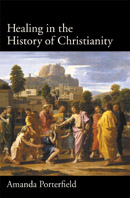The Resurgence of the Gospel, Part Four: The Reconversion of Europe
Peculiar to the worship of the Orthodox Church is its rendering of Philippians 2:5-11, where the apostle Paul writes of Jesus, “who being in the form of God, did not consider it robbery to be equal with God, but made Himself of no reputation, taking the form of a bondservant, and coming in the likeness of men, and being found in appearance as a man, he humbled Himself… .” This is referred to as the kenosis verse, the verse that speaks of complete humility with no resemblance of pride. This emphasis of Orthodox Christianity is its focus in caring for the sick, the prisoner, the slave, the dying, the homeless.
The world’s first hospital was started in accord with Jesus’ and the Church’s teaching about healing, the care of widows and children, and comforting the afflicted.
This practical outgrowth of Christian hospitality is worth mentioning because this aspect of the early church accounted for the spread of the gospel both East and West. It even merited the attention of Julian the Apostate, who was emperor between 366-363. Although he hated the Christians, he complained in an official letter about how the general public of his time cared not for the elderly, neglected the poor and dying, and exposed unwanted children yet these Christians cared for the ill, rescued children, provided medicine, buried the dead, and established homes for orphans and the lame. Julian died two years after his attempt to restore the ancient pantheon of gods. He died in a battle from a wound inflicted by an arrow. The historian Sozome, in his Ecclesiastical History of the Church from A.D. 324 said that, according, to a centurion close to Julian, heard Julian cry out: “O pale Galilean, thou hast conquered.”
Even earlier, close to AD 250, in a letter composed to a Diognetus by some unknown Christian, were some very interesting lines, to wit: “Any country can be their homeland, but for them their homeland, wherever it may be, is a foreign country. Like others, they marry and have children, but they do not expose them. They share their meals, but not their wives.”
It continued, “They live in the flesh, but they are not governed by the desires of the flesh. They pass their days upon earth, but they are citizens of heaven. Obedient to the laws, yet they live on a level which transcends the law.”
 The letter to Diognetus consists of five paragraphs of varying length describing the life of the Christians in the world. The unknown author gives an accurate picture of Christians in both Western and Eastern Europe, Northern Africa and Asia. The Christian Church, wherever it was found, and whether Catholic, Orthodox, Coptic, or Syriac, was mother of all our modern eleemosynary institutions be they hospitals, rehab centers, homes for children, the disabled, rescue missions. A person interested in this area of influence would well to read Amanda Porterfield’s Healing in the History of Christianity (Oxford University Press, 2009) [Editor’s note: see the review by Roscoe Barnes III].
The letter to Diognetus consists of five paragraphs of varying length describing the life of the Christians in the world. The unknown author gives an accurate picture of Christians in both Western and Eastern Europe, Northern Africa and Asia. The Christian Church, wherever it was found, and whether Catholic, Orthodox, Coptic, or Syriac, was mother of all our modern eleemosynary institutions be they hospitals, rehab centers, homes for children, the disabled, rescue missions. A person interested in this area of influence would well to read Amanda Porterfield’s Healing in the History of Christianity (Oxford University Press, 2009) [Editor’s note: see the review by Roscoe Barnes III].
The hostels for travelers along the difficult roads of the Roman empire and the dangerous silk roads of Asia were built by the monasteries. The monasteries have often been given bad press by popular writers. However, some of these monasteries expanded to become universities and produced some of the greatest minds, who by their influence and writings, fathered advances in science, mechanics, technology, education.
Category: Church History, Spring 2019


